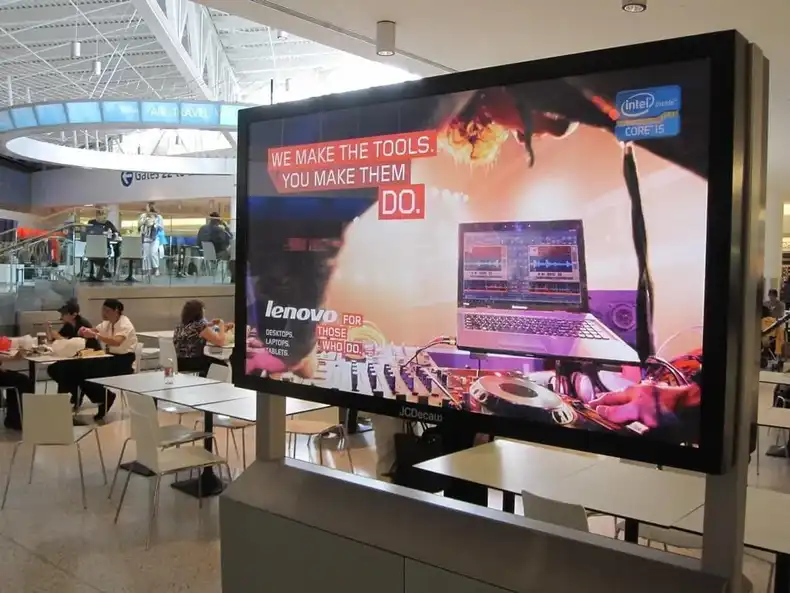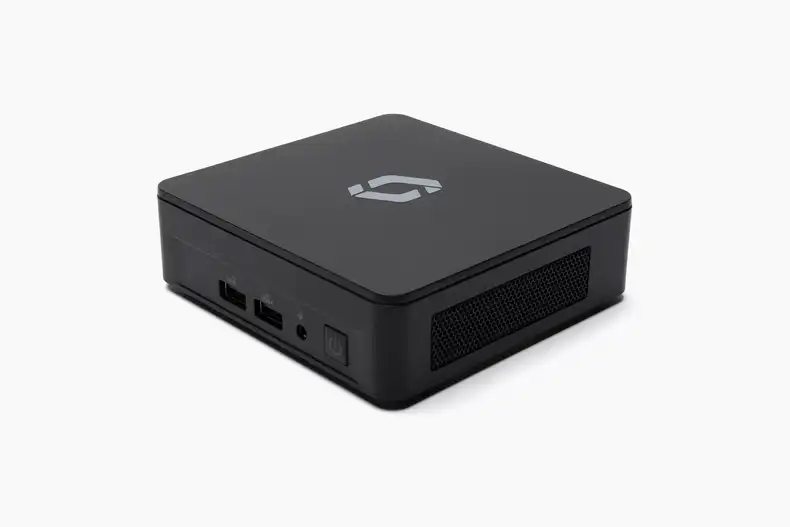This image is from Flickr.
To deploy a digital sign, you will need to mount the sign in place. Many individuals treat this aspect of digital signage installation as an afterthought. However, proper planning for your digital signage mount is critical for a successful and safe deployment. In this article, we’ll get you up-to-speed with everything you need to know for a successful digital signage mount. We’ll discuss VESA-mounting standards, hardware options, and hardware management tools.
What is VESA, and why is it important for digital signage?
VESA is an acronym for the Video Electronics Standards Association. VESA is a non-profit that “supports and sets industry-wide interface standards for the PC, workstation, and consumer electronics industries.” In other words, VESA dictates the measurements for 4-hole attachments and screws that are used to mount display screens.
To individuals deploying digital signage, VESA is an extremely useful set of standards. Not only does VESA help ensure compatibility between display screens and mounting hardware, but it also helps ensure safety. Digital signage users need to ensure that screens are properly secured and not at risk of falling. This practice is especially necessary when users mount display screens in public places.
When choosing a digital display screen and mounting hardware for digital signage, make sure that the components are VESA compliant and compatible with each other. VESA has several standards, so know that “VESA compliant” labels on a screen and mounting apparatus does not guarantee that the two are compatible.
For most digital signage deployments, users will work with VESA’s FDMI MIS-F standard. This standard has specifications for mounting monitors over 31-inches and up to 250 lbs. For the FDMI MIS-F standard, hole patterns have 200mm spacing, and compliant screw types include M6 x 8mm or 10 mm and M8 x 15 mm screws. You can read more about VESA standards here.
Types of mounting hardware and placement options
When it comes to the actual mounting hardware for your digital sign, there are endless options on the market. While it is easy to get overwhelmed, differences in digital signage mounting hardware can be categorized into just three groups: (1) mounting locations, (2) screen movement features, and (3) the number of screens supported.
For mounting location, users have a variety of options. Screens can be attached to static mounts or free-standing mobile mounts. For static mounts, users can choose between wall, ceiling, and even static floor-based mounts. For free-standing mobile mounts, screens attach to a mobile cart that users can wheel from location to location.
The next area to consider when purchasing a digital signage mount is screen movement. Screens can either be mounted flat, tilted, or with the ability to move with full motion on multiple axes. Users must consider screen movement features in conjunction with their desired screen-mounting location. For example, ceiling mounts will need to allow for tilting functionality, as viewers will need to look up at the screen from ground-level. Similarly, depending on the use case for the digital sign, the display screen may need to be mounted on an articulated-arm mount that allows the screen to display from different angles and directions. For example, the screen may need to be angled towards a conference table during meetings and later pushed against the wall for general-purpose events.
Lastly, individuals deploying digital signs will need to consider the number of screens that they wish to feature on each mount. For example, restaurants using digital menu boards will need mounting hardware that supports several display screens. Also, digital signage video walls will need mounting hardware that supports multiple display screens in stacked configurations. With video walls, users must also consider the bezel size of their digital screens and the minimum spacing between screens that the mounting hardware allows. For a video wall to achieve a “wow-factor” with viewers, users must keep bezel size and screen separation distances to a minimum.
Also, when mounting your digital sign, be sure to consider local laws on screen mounting. Depending on the size of the installation and the type of building, you may need to consider fire-codes and other construction-related rules for your area. Additionally, for U.S.-based individuals, consider laws such as the American Disability Act (ADA). For digital signs in public buildings, the ADA requires that the signs are placed between 27 and 80 inches above the ground and protrude no more than four inches from the wall. These requirements help ensure that digital signs are both safe and accessible for building visitors with disabilities.
Considerations when dealing with your mounting surface
Once you purchase mounting hardware and a compatible display screen, you will need to perform the installation. Whether you do the installation yourself or hire a professional, several components must be considered.
If you’re using a static mount, consider the material of the wall, ceiling, or floor where you plan on installing your mount. It’s certainly not a good idea to hang a heavy screen and mounting apparatus on drywall. You may need to use a stud-finding device to locate studs that can support the weight of your digital sign. Additionally, you should consult your building’s blueprints to ensure that you do not drill into electric or plumbing work within the wall. For brick or cement walls, be sure to use a compatible drill, drill bits, and screws.
You will want to use proper technique for the material you’re drilling into, including pilot holes and wall anchors. If you’re thinking of cutting corners when it comes to installing your screen mount, remember that your screen and associated hardware represent a significant investment. Also, no one wants to deal with a broken screen and an unsightly hole in the wall. Dealing with the consequences of a poorly-done screen installation can take much longer than the time required to do the job properly in the first place.
Remember that free-standing mobile mounts are an option, and going this route can save you the time and hassle of dealing with a wall-mounted screen.
Hardware and cable management with mounted digital signs
One crucial component of a digital sign is a digital signage player. This device is a small computer (some can fit in the palm of your hand) that renders content to your digital screen. This device will need to be placed next to your digital screen, as a digital signage player connects directly to the display screen via HDMI cable.
Some digital signage players are small enough and light enough to attach to the back of your display screen with Velcro. Users can connect the Raspberry Pi based Screenly Player to a display screen with Velcro, as the Screenly Player only weighs 0.45 lbs. For larger digital signage players, you will need to purchase a mountable computer holder. Note that if your digital sign is in a public location that is unattended by company staff, you may want to consider purchasing lockable computer holder.
You will also need to spend some time considering cable management. For a single screen digital sign deployment, this won’t be a huge hassle. Look online for “cable management covers” or “cable concealers,” and you will be able to find a wide range of products. With a few Zip Ties and cable covers, you can ensure that your digital sign will look great and stay organized.
Where can I buy VESA mounts for my digital sign display screen?
Purchasing a VESA mount is easy, as there are a ton of online retailers and resellers. Remember that there are multiple VESA standards, and you will need to make sure that your VESA hardware is compatible with your display screen. To find out which VESA standard your display screen is compatible with, measure the distance between screw holes on the back of your screen. You can then match these sizes with the appropriate VESA standard and compatible mounting hardware. If your display screen is not compatible with any VESA standard hardware, know that VESA adapters do exist.
To buy a VESA mount, check out the hundreds of VESA mount listings on Amazon. If you want to discuss VESA mount options in-person, your local electronics or hardware store should have a selection of VESA-compliant mounts. The store should also have several knowledgeable employees to help you with your purchase. Another seller with multiple VESA hardware products is Ergotron. While we at Screenly don’t recommend any particular VESA-compliant hardware, know that there are a ton of great products to choose from on the market.
That’s all for now! Hopefully, this article has provided a useful overview of mounting hardware and related considerations for installing your first digital sign. If you have any questions, feel free to reach out to Screenly Support. We’re here to help!





